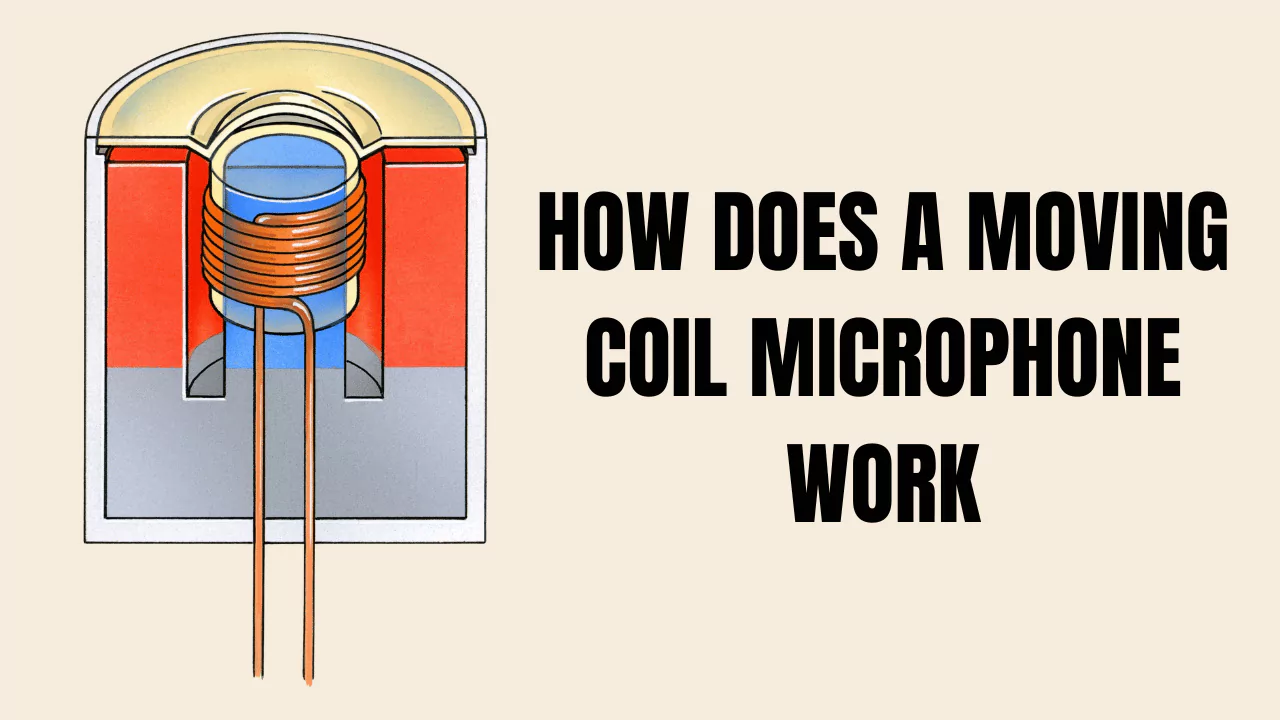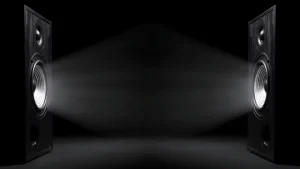If you are new to the music industry, then it is the dynamic microphone that suits you best if you are working with broadcasting, recording, or any work involved with live stage performances. However, before you proceed you must know how a moving call microphone works.
A dynamic microphone also known as a moving coil microphone is used to convert the sound waves into microphone signals. The simple physics that is put into use is electromagnetic induction. In the diaphragm of the microphone, you will find a conductive coil that oscillates inside the magnetic field making the diaphragm move. This movement is responsible for altering the current voltage passing through the coil.
A dynamic microphone is essential for events and performances. So, let’s get to the depth and understand how it functions and whether you can switch from a Dynamo to a dynamic microphone.
In This Article:
What is the dynamic microphone?
A Dynamic microphone is a device that helps in the conversion of sound into an electric signal. There are two types of dynamic microphones:
- Moving coil dynamic microphone
- Moving ribbon dynamic microphone
The principle of dynamic microphone working
The basic principle of a dynamic or moving coil microphone is through magnetic induction which generates a signal. When an electrically conductive metal cuts through magnetic flux, it is found that an electric current is generated, and that too of specific magnitude and polarity. There are certain factors, such as direction, speed, and distance that play a massive role in the workability of the microphone.
Moving coil dynamic microphone
These microphones are quite versatile and meant for general-purpose use. The makeshift is quite simple and has a few moving parts that are quite sturdy and meant for rough handling. You will find these microphones to be robust, inexpensive, and also resistant to moisture.
Moving coil dynamic microphones’ design makes them widely acceptable for on-stage use. They can also handle high sound pressure which involves music instruments and amplifiers. Usually, these microphones have no internal amplifier and do not require any external power to work.
What is the working process of moving a coil dynamic microphone?
In the case of a moving coil dynamic microphone if a wire is moved within a magnetic field it will generate current in the wire. By applying the induction principle the sound signal is captured using a wired coil magnet and thin diaphragm.
Usually, the diaphragm is attached to the coil and when it vibrates due to the response of incoming sound waves the coils move back and forward. Thus, an electric current in the coil is created and this is channelled from the microphone through the wire and finally producing the sound.
Moving ribbon dynamic microphone
When compared with the moving coil microphone, moving ribbon dynamic microphones are quite fragile. These are particularly used inside the studio rather than on stage. However, you might have spotted them being used during high-profile tours. These ribbon microphones have a mellow sound and are a perfect combination with brass instruments guitar cabinets and other similar resources.
What is the working process in moving ribbon dynamic microphone?
The working process is quite similar to moving coil dynamic microphones. Here, the induction principle is also used. You will find that a thin corrugated aluminium wire is suspended in the magnetic field in place of a coil of wire. Now, this ribbon starts to vibrate sympathetically which produces the sound, and in response to this, an electric current is generated within the ribbon.
How to switch from dynamo to dynamic microphone?
The main reason why dynamic microphones are in demand is because of their no self-design and endurance to maximum sound pressure level. When compared with a dynamo, a dynamic microphone is just an evolved version, as a Dynamo microphone still uses an audio signal or alternating current to function.
Dynamic microphones have been designed using the same principle as dynamo microphone, but dynamic microphone has a coil of wire that moves back and forth direction of the magnetic field. Now, this induces alternating current across the coil of wire, where you will find AC dynamos, called magnetos, to function.
What are the parts of a moving coil microphone?
Here are the parts that you can find if you tear down a moving coil microphone:
A moving coil conductor is made of conductive wires that have a small diameter and look similar to a ring. This coil moves around the diaphragm present inside the magnetic field which makes them a core part of the closed circuit.
The transducer is another important part of the moving coil and helps in converting mechanical to electrical energy. The entire process is carried out through a magnet. Moreover, the moving coils are designed through flexible materials, usually copper wire.
Thus, a microphone works through various processes but the basic principle is similar. There are minute new changes based on the purpose it is used for. They also have different designs and depending on the requirement this tends to change.
Copper wire is wounded multiple times as it supports electromagnetic induction and produces a strong signal. It is positioned properly inside the microphone and the moving coil stays in contact with the microphone’s diaphragm. The coil is suspended inside the gap where a magnetic structure is present. Moreover, the conductivity will increase if the coil has longer wires.
What is required for electromagnetic induction to take place?
For the electromagnetic induction to take place you need a close circuit that has a lot of work, other than a magnetic field and conductive coil. You would find this working principle on the two signal wires that are attached to the dynamic microphone moving coil. You will find the wires are attached to the end through a wound copper making it a way for electromagnetic induction even if the electric circuit is closed.




